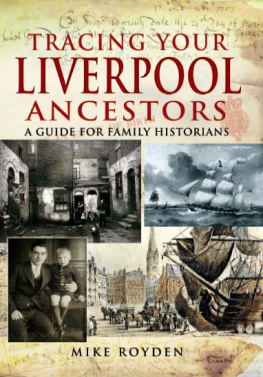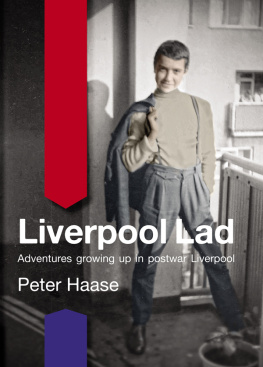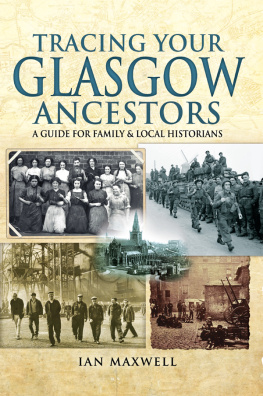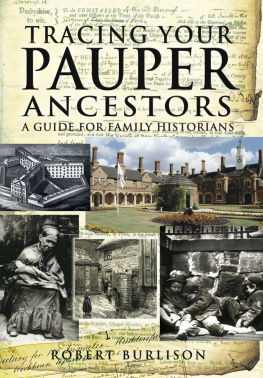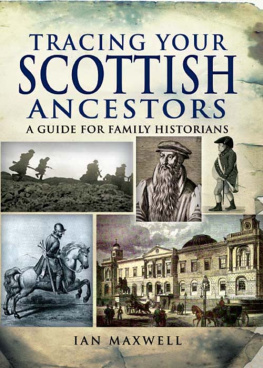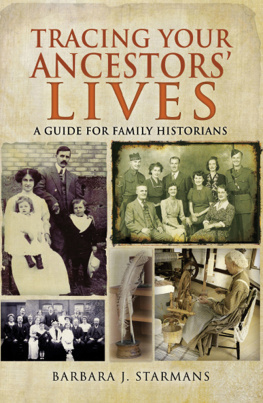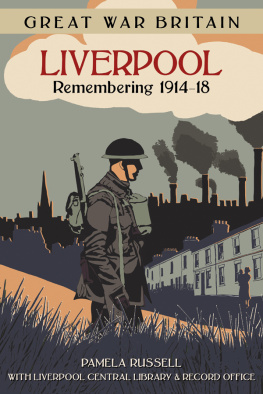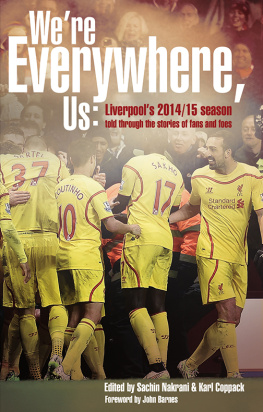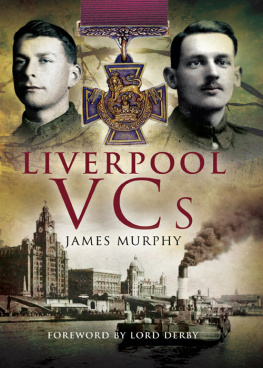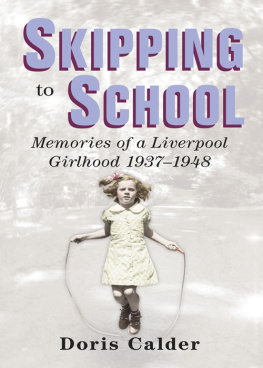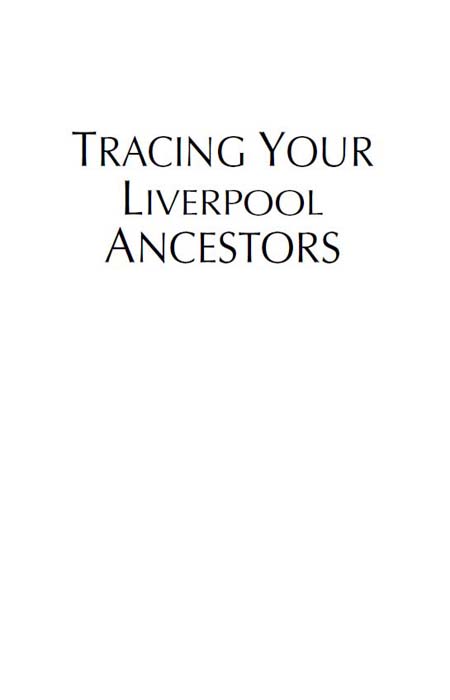
FAMILY HISTORY FROM PEN & SWORD
Tracing Your Yorkshire Ancestors
Rachel Bellerby
Tracing Your Royal Marine Ancestors
Richard Brooks and Matthew Little
Tracing Your Pauper Ancestors
Robert Burlison
Tracing Your Army Ancestors
Simon Fowler
A Guide to Military History on the Internet
Simon Fowler
Tracing Your Northern Ancestors
Keith Gregson
Your Irish Ancestors
Ian Maxwell
Tracing Your Air Force Ancestors
Phil Tomaselli
Tracing Your Secret Service Ancestors
Phil Tomaselli
Tracing Your Police Ancestors
Stephen Wade
Tracing Your Jewish Ancestors
Rosemary Wenzerul
Fishing and Fishermen
Martin Wilcox
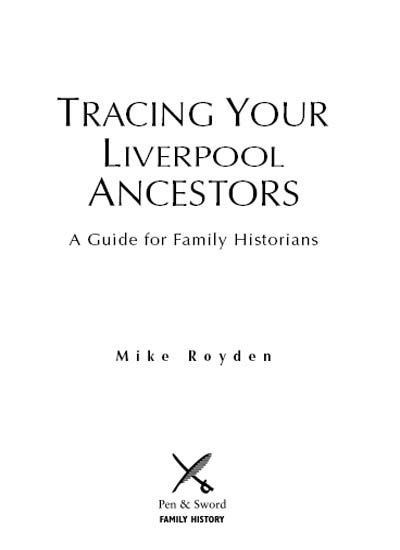
First published in Great Britain in 2010 by
PEN & SWORD FAMILY HISTORY
an imprint of
Pen & Sword Books Ltd
47 Church Street Barnsley South Yorkshire
S70 2AS
Copyright Mike Royden 2010
ISBN 978 1 84415 990 1
Digital Edition ISBN 978 1 84468 677 3
The right of Mike Royden to be identified as Author of this Work has
been asserted by him in accordance with the Copyright,
Designs and Patents Act 1988.
A CIP catalogue record for this book is
available from the British Library.
All rights reserved. No part of this book may be reproduced or transmitted in any form or by any means, electronic or mechanical including photocopying, recording or by any information storage and retrieval system, without permission from the Publisher in writing.
Typeset in Palatino and Optima by
Phoenix Typesetting, Auldgirth, Dumfriesshire
Printed and bound in England by
CPI UK
Pen & Sword Books Ltd incorporates the Imprints of Pen & Sword Aviation, Pen & Sword Maritime, Pen & Sword Military, Wharncliffe Local History, Pen & Sword Select, Pen & Sword Military Classics and Leo Cooper.
For a complete list of Pen & Sword titles please contact
PEN & SWORD BOOKS LIMITED
47 Church Street, Barnsley, South Yorkshire, S70 2AS, England
Email:
Website: www.pen-and-sword.co.uk
Dedication
For Lewis and Liam
ACKNOWLEDGEMENTS
I have been fortunate to have been educated and encouraged by many well-known historians and archaeologists at work in the Liverpool area. Paul Booth and Dr Jenny Kermode of the University of Liverpool gave me much encouragement, both before and during my degree. Paul also invited me to lecture in Continuing Education at the University of Liverpool, which began my career in teaching. Dr Dorothy OHanlon, both as a friend in the Merseyside Archaeological Society, and as my tutor in teacher training, was a great influence (did you know her father placed Hess under citizens arrest when he landed on his Scottish farm in 1941? now theres a story I never tire of hearing). Dr Janet Hollinshead, Dr OHanlons colleague at St Katherines College, Liverpool Institute of Higher Education (now Hope University) gave me much guidance on local history research. Dr Rob Philpott and Ron Cowell, Field Archaeologists in National Museums on Merseyside, have given me a great deal of help in discussing research, attending excavations and guidance regarding document research. I thank them all.
Many thanks to the staff of Liverpool Record Office, past and present, who have helped me over the years, especially Roger Hull, who continues to guide the occasional enquiry my way, including the one he received regarding this volume, and Kay Parrott, who was always very patient and helpful and is now enjoying life carrying out her own writing and publishing.
Thanks to staff at Merseyside Maritime Museum Library and Cheshire Record Office.
Thanks to members of the various local and family history societies who have helped with my research over the years, and have given me regular invitations to lecture at their meetings.
Grateful thanks also to students of my university Continuing Education classes, many of whom contributed to the student articles on my local history pages website. Many are still active, producing their own publications on Port Cities, street names and underground Liverpool, and have helped in the reopening of Williamson Tunnels. Others went on to form the successful Liverpool History Society.
Special thanks are due to Harold and Joyce Culling, founder members of Liverpool & SW Lancs Family History Society back in May 1976, who have continued to hold office to the present day. They gave me help and guidance on numerous occasions and it was a pleasure, at their invitation, to give the opening lecture at the Societys 20th Annual Conference at Liverpool Cathedral in 2008.
Thanks also to my mother, Hazel Royden, a silver surfer and still a world traveller in her late seventies, who has been a great source of oral history.
Finally, thanks to my teenage sons Lewis and Liam, who kept me supplied with cups of tea, occasionally cooked the dinner, and designed and built the garden during our house move. It has been a busy year. Right, lets go sailing.
INTRODUCTION
I am the English sea-queen; I am she
Who made the English wealthy by the sea
The street of this my city is the tide
Where the worlds ships, that bring my glory, ride
A Masque of Liverpool (1930) by John Masefield
I t is always something intriguing that first ignites your interest reading about an ancestor or relative in a newspaper, your surname appearing on a passenger list for the Titanic, watching a celebrity have their tree traced for them on television. In my case it was quite ordinary. As a child I wanted to know why there was a Royden Street in the Dingle in Liverpool, an area where generations of my fathers family had lived. It was, and still is, a rare name, so surely there was a connection? And so it proved. After a period of research I discovered it was named after Sir Thomas Bland Royden, a local shipbuilder, MP for West Toxteth and Mayor of Liverpool in 1878. And we were related. However, even before that research had been forced upon me when, as a fourteen-year-old in the Third Year (Year 9 in new money) I was given History homework: trace your family tree for next lesson. That was in 1970 and it must be the longest homework assignment on record. I am still working on it.
In those days of course there was no internet, so trips to record offices were frequent. Even the Liverpool Family History Society, which has given help and guidance to many thousands of researchers since the mid-1970s, did not exist back then. Occasional trips to London were necessary, to visit the Public Record Office (PRO), or St Katherines House to consult the Birth, Marriages and Deaths indexes in order to obtain the corresponding certificates. And now all this is available with a few mouse clicks. Nevertheless, knowing how to carry out your research is still just as important and before you start it is essential to be aware of the most commonly used sources. The good news is that a great deal is now on the internet and much more will be there in the future, and although I sometimes complain about the cost of documents online or paying to gain access to certain archive pages, it is still much cheaper than travel and accommodation. I do still think, however, that it is more fun to go into a record office and consult the original archives when possible.
Next page
